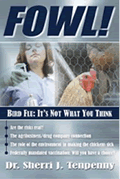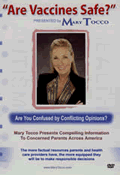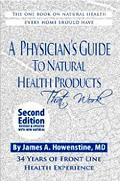VACCINES SIDE EFFECTS - THE DTaP VACCINE
By Mary Tocco
January 7, 2011
NewsWithViews.com
Vaccine side effects have been noted in the combined Diphtheria, Tetanus and Pertussis vaccination since it was licenses in the 1940’s. This combined vaccine was not used on a large scale until the vaccinations were independently approved and eventually combined together with inadequate safety studies. The first combined shot was the DPT. After years of causing severe neurological injury, the DPT was attenuated (weakened) and is now referenced as the DTaP. Dr. Mark Geier was responsible for weakening the vaccine after he observed the damage it was causing. He is also the doctor who was appointed by Congressman Dan Burton, chair of the Government Reform Committee (2000) in Washington, to investigate the vaccines after Burton’s grandson regressed into severe autism following his vaccinations. It was Dr. Mark Geier and his son, David Geier, who discovered the form of mercury referred to as Thimerosal used in over 50 vaccines.
First, we must all realize that the “theory” of vaccine is based on very old and outdated science and understanding of the immune system. Considering that vaccines are recommended for every child starting at birth and continuing on for years and throughout life, one would hope and expect that the science is current and totally accurate. Another example of an unproven and outdated “theory” would be circumcision. For decades doctors were taught that circumcision was medically necessary and that it is healthier to circumcise than not. This “theory” has no scientific basis and has been disproven for over 25 years and yet many doctors still perform and encourage circumcision. Circumcision is a parent’s choice and is usually done for traditional or customary reasons. It is not “medically” necessary for health reasons. In the case of vaccinations, our understanding of the immune system has exploded in the last 10-15 years and any informed ethical immunologist will admit that vaccines are potentially causing great harm. Having made that distinction lets us carefully look at the known side effects of the DTaP Vaccine.
Tetanus vaccine: How does one get tetanus? Tetanus is a spore that comes from animal feces. You can only get it from deep puncture wounds. In other words the pathogen (Clostridium tetani) is literally injected into the body via the deep puncture wounds. Vaccine injection does the same thing: it bypasses the normal portals of entry (the mouth and nose) and delivers the pathogen and toxins straight into the blood stream which triggers an unnatural, abnormal, deranged immune response called sensitization. Also, those who get the disease do not get natural immunity! The incidence of tetanus infection is rare because of modernization and wound management. Humans are no longer exposed to animal feces and the tetanus spore as they were at the turn of the century when we were, at large, farming communities. That fact alone calls to question: why are we still giving this pathogen to babies and infants? Here are some early references of the tetanus vaccine causing neurological harm:
•
Journal of Neurology, 1977, entitled "Unusual Neurological Complication
following Tetanus Toxoid Administration."
• The Journal of Allergy and Clinical Immunology,
1973, carried an article entitled "Hypersensitivity to Tetanus
Toxoid," and in a volume entitled "Proceedings of the II International
Conference on Tetanus" (published by Hans Huber, Bern, Switzerland,
1967), an article appeared entitled "Clinical Reactions to Tetanus
Toxoid."
• Journal of the American Medical Association
(1940) was entitled "Allergy Induced by Immunization with Tetanus
Toxoid."
• The British Medical Journal (1940) reported
on "Anaphylaxis (a form of shock) following Administration of Tetanus
Toxoid."
• German Medical Journal (19690) reported a case
of paralysis of the recurrent laryngeal nerve (the nerve to the voice
box) after a booster injection of tetanus toxoid.
The way to deal and avoid the tetanus infection is proper wound management. The vaccine carries no guarantee of immunity but is a known toxin.
Diphtheria: This disease like all the others was prevalent in the turn of the century before we became modernized. Like most infectious illnesses, death from Diphtheria was greatly diminished decades before we introduced the vaccine. The bacteria live in an infected person's nose, throat, skin, or eye discharges, and are passed to others in close contact through coughing or sneezing. It was prevalent before modern sanitation and was most common in crowded conditions with inadequate hygiene. Skin diphtheria causes a rash that is hard to distinguish from impetigo. There is not much on record about the individual vaccine. The toxoid comes in two strengths - (D- DTaP) capitol D is recommended for children younger than seven because they say they need the higher concentration to develop immunity. Anyone older than seven should get the low (d- TdP) concentration because they say it has fewer side effects and is strong enough to boost immunity. This author questions why they would recommend a stronger toxoid to the younger, more underdeveloped and venerable children? The key to avoiding this illness is personal hygiene.
Pertussis: The Pertussis toxin is produced by the bacterium Bordetella pertussis, colonizes in the respiratory tract and causes an infection. This illness is commonly referred to as Whooping Cough because it is a respiratory illness that causes mucus and a deep persistent cough. The Pertussis toxin is also a virulent poison that can affect the islets of the pancreas, which is where the insulin is produced. It is treatable with medications and not life threatening for most but can be life threatening for babies under a year because they cannot cough up the mucus. Once a child has the wild illness, they are immune for life and many physicians feel that the benefits of the illness include better immunity to other illnesses like asthma.
The vaccine does not guarantee immunity and has been associated with juvenile diabetes and other neurological injuries. Congressional Testimony by Dr. Harris Coulter showed that infants are very vulnerable to hypoglycemia due to increased production of insulin after vaccinations. Extensive studies around the world show that consistently, within four years of any vaccine implementation including the DTaP, juvenile diabetes increased by 50%. The pertussis vaccine has also been suspected of causing infantile encephalitis and sudden infant death (SIDS) syndrome and also noted to cause bacterial infections including meningitis. Sweden banned the Pertussis vaccine many years ago because of these dangers.
For similar reasons, Japan delays the vaccine until after two years of age, whereas in North America, it is usually administered at two months of age. The United States has more babies’ die of SIDS than any other modernized country! Both Sweden and Japan are credited with having the lowest infant mortality rates in the world. This fact would tend to discredit claims that the Pertussis vaccine is necessary to prevent an escalation of infant mortality in North America.
| Subscribe to the NewsWithViews Daily News Alerts! |
The key to avoiding all illnesses and vaccines is by promoting natural health! There are no guarantees that you will not get some sort of infection in life. I believe that early-life childhood illnesses build the immune system and prepare us for adulthood….the passage to a healthy life. As a parent, you must decide if your child is better off with the possibility of getting these common illnesses or an injected vaccine. Before making that decision, I encourage you to look up all vaccine ingredients, consider how they are administered (injection which bypasses the natural method of exposure) and make a vaccine decision based on education and not fear.
For more articles about Vaccines Side Effects, visit Mary Tocco’s educational website.










 Share
This Article
Share
This Article




